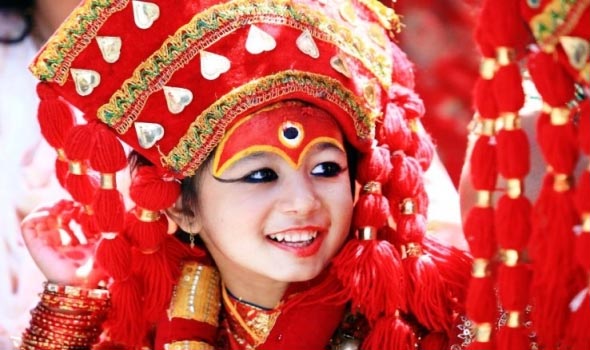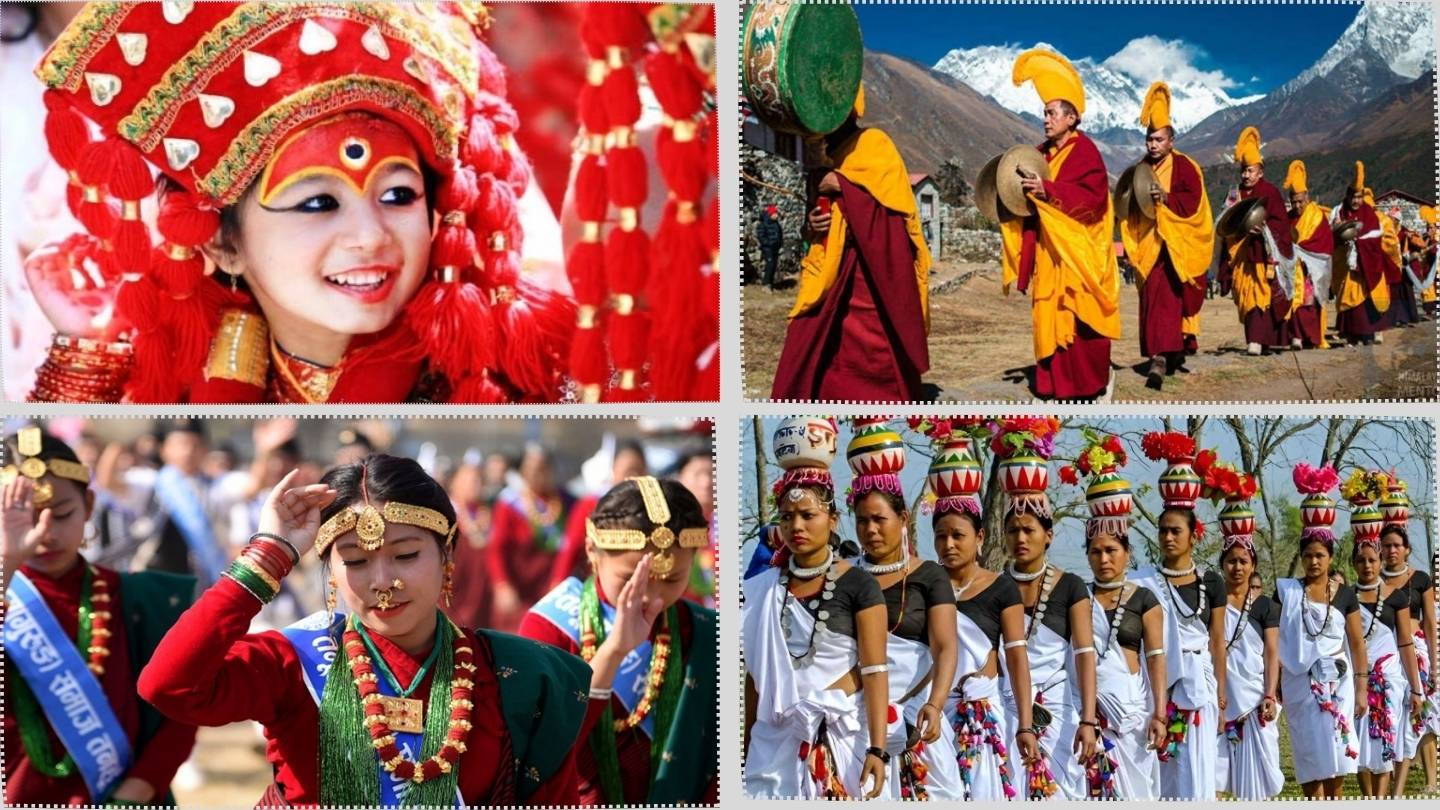
Nepal’s Traditional Art, Literature, Music, and Dance: A Journey Through Living Heritage
When people think of Nepal, the first images that come to mind are often snow-capped mountains, colorful prayer flags, and bustling city squares. But behind this landscape lies something equally powerful — a cultural heritage built on centuries of art, literature, music, and dance. These traditions are not simply part of history books; they live in festivals, family rituals, and everyday life, shaping how Nepalese people see themselves and share their identity with the world.
This article takes you through that journey — from the ancient paintings of the Kathmandu Valley to the folk songs sung in remote villages, from timeless epics recited around firelit gatherings to mask dances performed in vibrant festivals. Along the way, we’ll see how religion, history, and community have shaped these cultural forms and how they continue to evolve in modern Nepal.
Traditional Art Forms in Nepal
More Than Decoration: The Meaning of Art
Art in Nepal has never been just about beauty. A temple carving or a paubha painting carries stories, beliefs, and prayers. Each line, each brushstroke, is meant to connect the human world with the divine. That’s why, even today, people don’t just “look” at art in Nepal; they interact with it, worship it, and live with it.
Painting Traditions
The story of Nepalese painting begins centuries ago, with rock art and murals inside ancient shrines. Over time, the most recognized form became the paubha, detailed paintings created on cotton or handmade paper. Unlike paintings meant for galleries, these are sacred objects, often used in Buddhist and Hindu rituals.
Paubhas are usually made with natural pigments — deep blues from lapis lazuli, earthy reds from minerals, and touches of gold leaf to highlight the divine. The subjects vary: Hindu deities like Vishnu and Shiva, Buddhist figures like Avalokiteshvara, or symbolic mandalas meant for meditation.
The Newar community of the Kathmandu Valley has kept this tradition alive for centuries. If you walk through Patan or Bhaktapur even today, you’ll find workshops where artists train their children and apprentices, making sure the skills don’t disappear.
Sculpture
If paintings were the visual prayers on cloth, sculptures were their counterparts in stone and metal. The Licchavi period (4th–9th century CE) is often celebrated as the golden era of Nepalese sculpture. From this time, we see stone images of gods placed in courtyards, bronze statues of deities used in rituals, and even small terracotta figures made for households.
The method of lost-wax casting, still practiced in Patan, allows artisans to create breathtakingly detailed bronze statues. These aren’t only museum pieces — many are carried in festivals, worshipped in temples, and passed down in families.
Architecture
Nepal’s architecture speaks loudly of its cultural depth. The pagoda style, which later spread to other Asian countries, has strong roots here. Just stand before the towering five-roofed Nyatapola Temple in Bhaktapur, and you’ll sense how architecture in Nepal is not only about space but about spirituality.
From Buddhist stupas like Swayambhunath and Boudhanath to Hindu temples like Pashupatinath and Changu Narayan, architecture combines sculpture, painting, and community life. The carved wooden windows, stone guardians, and golden spires are not mere decoration — they are a language of faith and identity.
Traditional Literature in Nepal
A Blend of Sacred and Secular
Nepali literature has always been more than words on paper. For centuries, it was heard rather than read — sung, recited, or performed. From sacred verses to village folk tales, these stories carry lessons, humor, and wisdom.
Religious Texts
Hindu and Buddhist texts are at the heart of Nepal’s literary tradition. The Ramayana and the Mahabharata are not only stories but living dramas, staged during festivals or recited in homes. Buddhist Jataka tales, which teach moral lessons through stories of the Buddha’s previous lives, remain popular in monasteries and schools alike.
Folk Tales and Oral Traditions
Every village in Nepal has its stories. These are passed down from elders to children, often by the fireside on cold winter nights. Tales of tricksters, brave princesses, or spirits of rivers and forests are told not just for entertainment but for guidance. They explain values — honesty, bravery, respect for elders, and harmony with nature.
One widely known story, The Princess Who Was Burned Alive, carries a lesson on morality and truth, reminding listeners that actions rooted in honesty eventually triumph.
Poetry and Classical Literature
Poetry became the heartbeat of Nepali literature. Among the many poets, Laxmi Prasad Devkota stands tallest. His work Muna Madan — a tragic love story about migration and loss — is written in simple language but carries deep emotion, which is why it continues to touch readers nearly a century later.
Other figures like Siddhicharan Shrestha (the “poet of the people”) and Parijat, whose novel Shirishko Phool broke new ground in modern Nepali literature, show how words in Nepal have been used both for devotion and for social reflection.

Traditional Music and Dance in Nepal
Music: The Soundtrack of Daily Life
Music in Nepal is not confined to concerts or stages. It is woven into everyday life — weddings, harvests, religious rituals, or just evening gatherings.
Instruments and Styles
-
Madal: A double-headed hand drum central to folk music.
-
Sarangi: A fiddle played by the Gandharva community, who traditionally traveled from village to village singing ballads of love, tragedy, and news.
-
Naumati Baja: A set of nine traditional instruments used in processions.
-
Flutes and trumpets: Often played during religious rituals.
Folk and Classical Forms
-
Dohori: Perhaps the most vibrant, dohori is a musical dialogue where men and women exchange improvised verses, often witty and playful.
-
Lok Geet: “Songs of the people,” tied to farming, festivals, and rural life.
-
Bhajans: Devotional songs sung in temples or community gatherings.
Dance: Movement with Meaning
Nepal’s dances, like its music, are both sacred and social.
-
Charya Nritya: A Buddhist ritual dance where each gesture symbolizes meditation and storytelling.
-
Lakhey Dance: Performed during Indra Jatra in Kathmandu, this dramatic mask dance represents a protective spirit, both fearsome and playful.
-
Jhankri Dance: Linked to shamanic healing practices, performed by spiritual healers in rural areas.
-
Deuda Dance: Popular in western Nepal, performed in a circle with interlinked hands, reflecting community unity.
Every major festival — Dashain, Tihar, Indra Jatra — is incomplete without music and dance. They bring together generations, from children learning traditional steps to elders passing down songs.
The Influence of Religion
Religion runs like a thread through Nepalese culture. It shapes not only rituals but also art, music, and literature.
-
In Art: Temples and stupas are covered with carvings of gods and mythical beings. Buddhist monasteries hold mandalas that guide meditation.
-
In Literature: Epics and scriptures provide moral lessons, shaping oral and written traditions.
-
In Music and Dance: From devotional bhajans to masked dances, spirituality remains central.
Festivals like Dashain, Tihar, and Buddha Jayanti show how religion and art merge into one — faith expressed through music, dance, and storytelling.
Contemporary Developments
Nepal’s culture is not frozen in time. Modern writers, musicians, and artists borrow from tradition while adding new voices.
-
Literature: Writers now explore migration, gender, and identity, while still honoring folk and classical roots.
-
Art: Young painters experiment with mixing paubha motifs with modern themes.
-
Music: Folk instruments like the sarangi appear alongside guitars in fusion bands, and folk-pop remains hugely popular.
-
Dance: Contemporary choreographers blend traditional moves with global styles, staging performances both locally and abroad.
These changes show that tradition doesn’t die — it adapts. The past provides a foundation for creativity today.
Preserving and Promoting Heritage
As modernization and globalization grow, some traditions risk fading. Yet efforts to preserve them are strong:
-
Museums and Academies: Institutions like the National Museum, Patan Museum, and Nepal Academy of Music and Drama archive, teach, and showcase traditional forms.
-
Festivals: Events such as Indra Jatra or Tihar, but also newer cultural fairs, give platforms for music, dance, and art.
-
Community Practice: Villagers, families, and local artists keep traditions alive not through policy but by continuing to sing, dance, paint, and sculpt.
Preservation is not only about saving “old” things — it’s about keeping them alive, meaningful, and connected to today’s life.
Conclusion
Nepal’s art, literature, music, and dance are not separate subjects in history books. They are lived experiences — from a grandmother telling folk tales to her grandchildren, to a sculptor carving an image of a deity, to young people singing dohori songs late into the night.
These traditions carry the heartbeat of Nepal: the values of faith, community, resilience, and creativity. They remind us that culture is not static; it grows, adapts, and continues to guide people through joy, hardship, and change.
For anyone who wishes to understand Nepal beyond its mountains and landscapes, immersing in its cultural expressions offers the most honest introduction. This living heritage is Nepal’s greatest gift to its people — and to the world.
Key Points:
|


